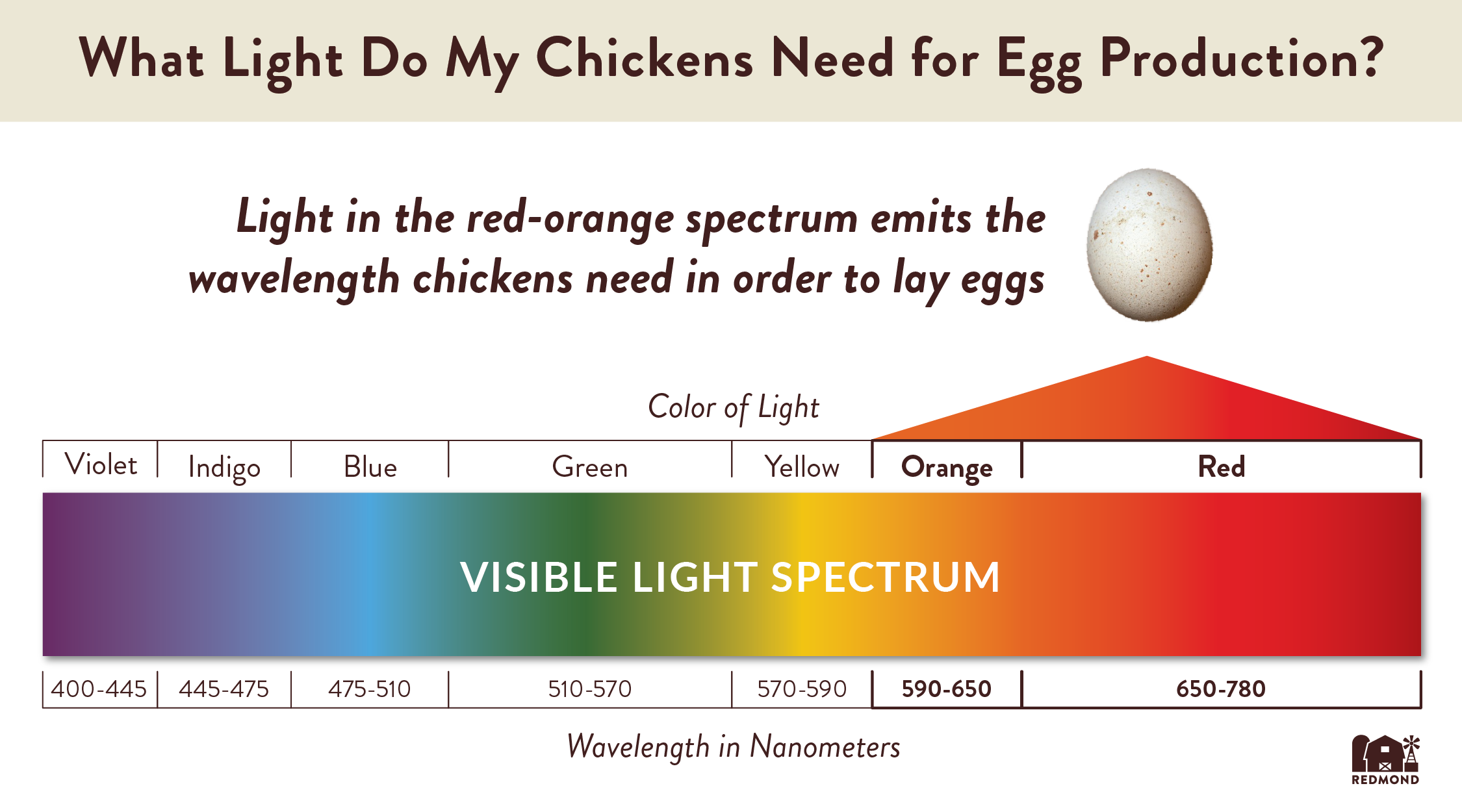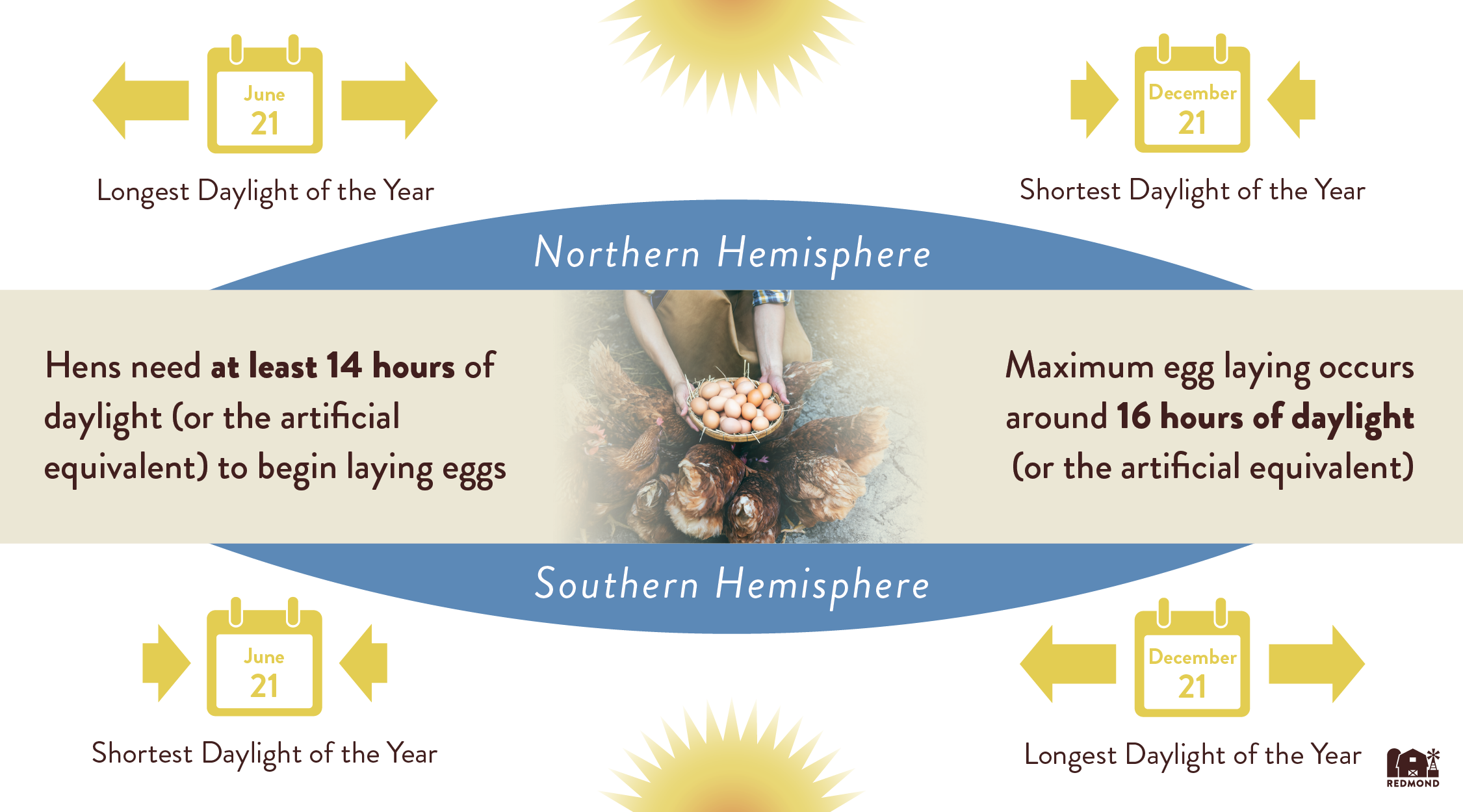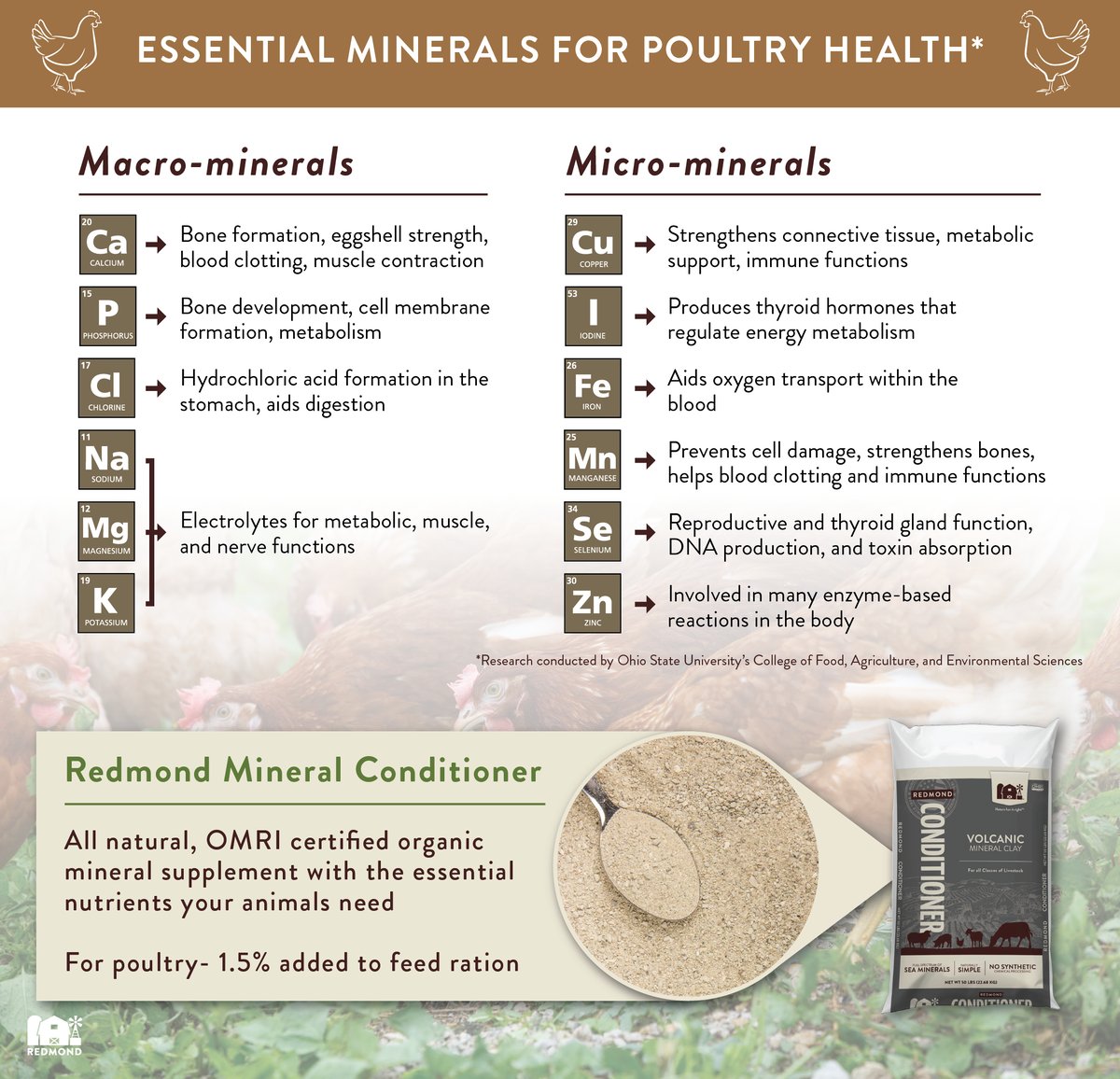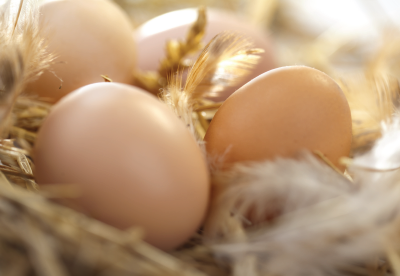Why Do Chickens Need Light To Lay Eggs?
Sunlight stimulates quite a few biological processes in living organisms. It drives the production of vitamin D in our own bodies, photosynthesis in plants, and of course egg laying in your hens.
When a certain wavelength of light reaches a chicken’s brain, it triggers a chain of events that leads to productive egg laying:
- The light is captured by photoreceptors in the brain
- The brain begins producing substances called “neuropeptides” (amino acid chains)
- These neuropeptides tell the chicken’s body to start producing the hormones needed for ovulation, yolk and shell formation, etc.
What Kind of Light Do My Chickens Need?
Unfortunately, not just any old light will trigger this chain reaction for your chickens. The visible light spectrum (that we can see with the naked eye), covers a wide range of wavelengths. Violets and blues are on the lower end of the spectrum, while reds and oranges emit higher wavelengths. Chickens need light on the higher end of the spectrum in order to stimulate egg laying.

The National Institute of Health has found that:
"higher wavelengths are able to penetrate through the skull and brain tissue more easily to stimulate the hypothalamic photoreceptors...red light is the most effective in activating the reproductive axis.”
This spectrum of light not only triggers egg laying, but can increase the number of eggs laid and their size during early egg laying.
How Much Light Do My Chickens Need?
According to Michigan State University’s (MSU) Ag Extension:
“Hens will begin laying when the amount of daylight reaches 14 hours per day during early spring. Maximum egg laying will occur when the day length reaches 16 hours per day.”
These 16 hour “photoperiods” of light in combination with about 8 hours of darkness will help regulate healthy bio-rhythms in your flock.
From late spring to early fall, the sun can usually provide your flock with enough light. For the Northern Hemisphere, September through March will have diminished daylight hours. For the Southern Hemisphere, March through September will have shorter daylight hours. Those dates will fluctuate depending on where you live on each hemisphere, so you can check your area's specific daylight hours.

It is also important to note that persistent cloud cover and excessive particulates in the air (like from wildfire smoke) can weaken the sun’s rays any time of year. Having supplemental lighting on hand can help you through the dark months as well as unexpected periods of weak sunlight.
Supplemental Lighting For Your Chickens
*Note: Not all chicken raisers like to use supplemental lighting with their flocks. Some choose to give their ladies a break for the winter. But if you would like to learn more about how to safely use supplemental lighting, you can encourage productive laying during the off-season.
As mentioned earlier, any supplemental lighting needs to be in the orange to red spectrum to stimulate reproductive cycles. Make sure the lights are placed above food and water sources and reach the majority of the hen house.
Which Light Should I Get?
Light bulbs have come a long way over the years. They are becoming more energy efficient, safer, and more durable. The experts at MSU have some additional advice on lightbulb types.
Fluorescent:
- Less expensive than incandescents
- More difficult to maintain in dusty hen houses
- Difficult to regulate their intensity
- May not operate at full strength in cold weather
Incandescent:
- More expensive on your electric bill
- Easy to regulate intensity with the use of a dimmer
LED:
- Most energy efficient
- Most reliable in cold weather
A Word About Lighting Safety
Due to curious animals and lots of flammable materials, you should always take caution any time you add electrical fixtures to a henhouse. Keep wiring and lights well away from your chickens’ reach and a safe distance from feathers, straw, or other flammables. When you first install the lights, keep a close eye on your flock to make sure you catch any problems before leaving the henhouse unattended.
Managing Photoperiods
Supplemental lighting should be gradually introduced and used in the morning hours so the hens naturally roost. Here are a few general tips on how to help manage the 16 hour photoperiod and the 8 hour dark period:
- Increase photoperiod by about 30-60 minutes each week until you reach your goal
- Avoid drastic changes in their light and dark schedule (dramatic shifts to natural biorhythms can be stressful and even dangerous for your animals)
- Be consistent and use timers if necessary
- 8 hours of dark is essential (protecting circadian rhythms helps maintain normal melatonin levels which is also important for egg laying and general health)
Poultry Health with Redmond Minerals
For over 50 years, Redmond Minerals has helped farming operations get back to what they love about raising animals. Our mineral supplements and clay conditioners offer all classes of livestock an expansive profile of over 60 trace minerals. Click to learn more about what minerals your chickens need and how Redmond can help. Give Redmond a call today at  to learn more about our poultry products.
to learn more about our poultry products.

© 2024 Redmond Minerals Inc.

